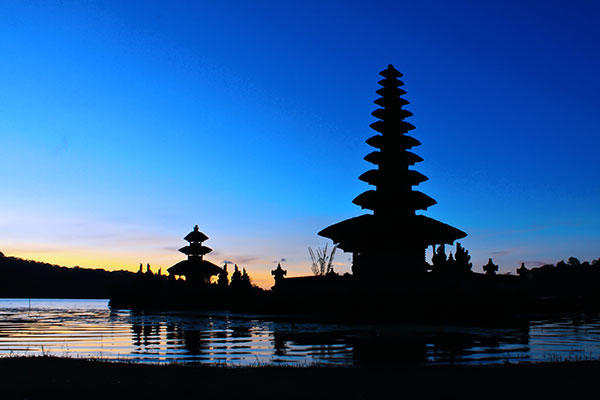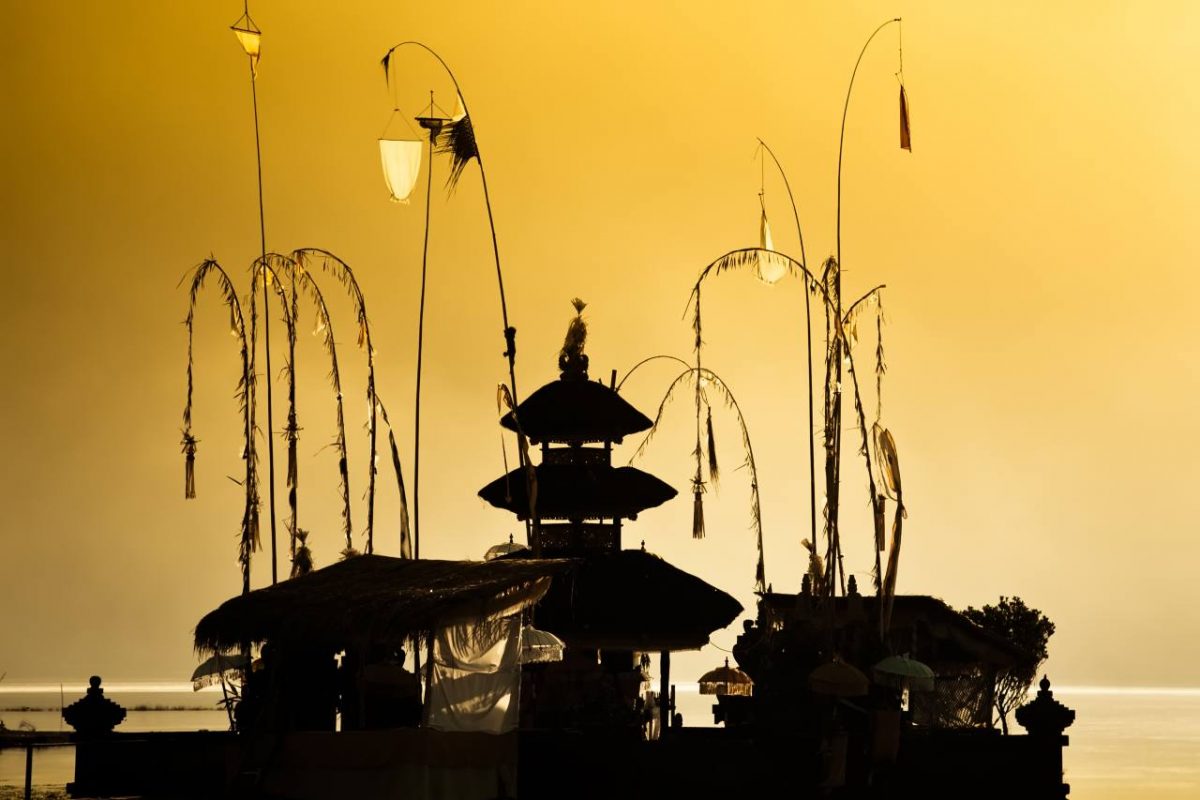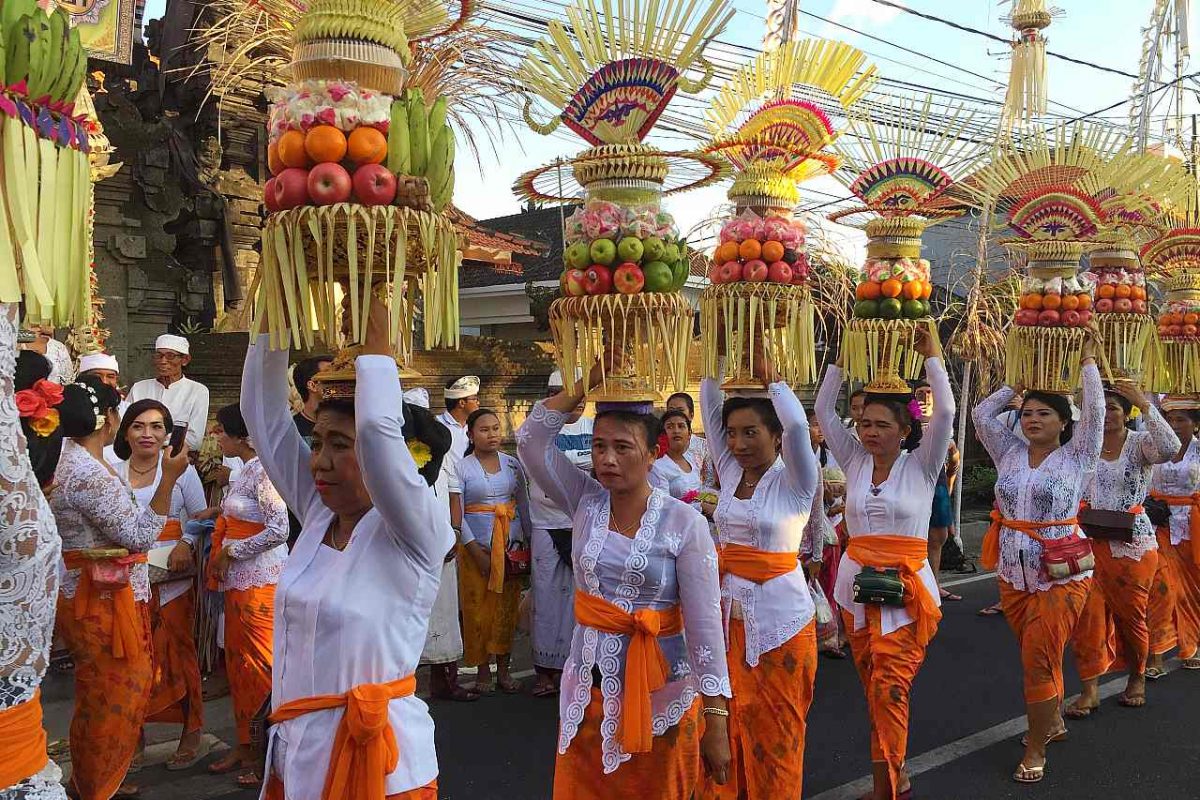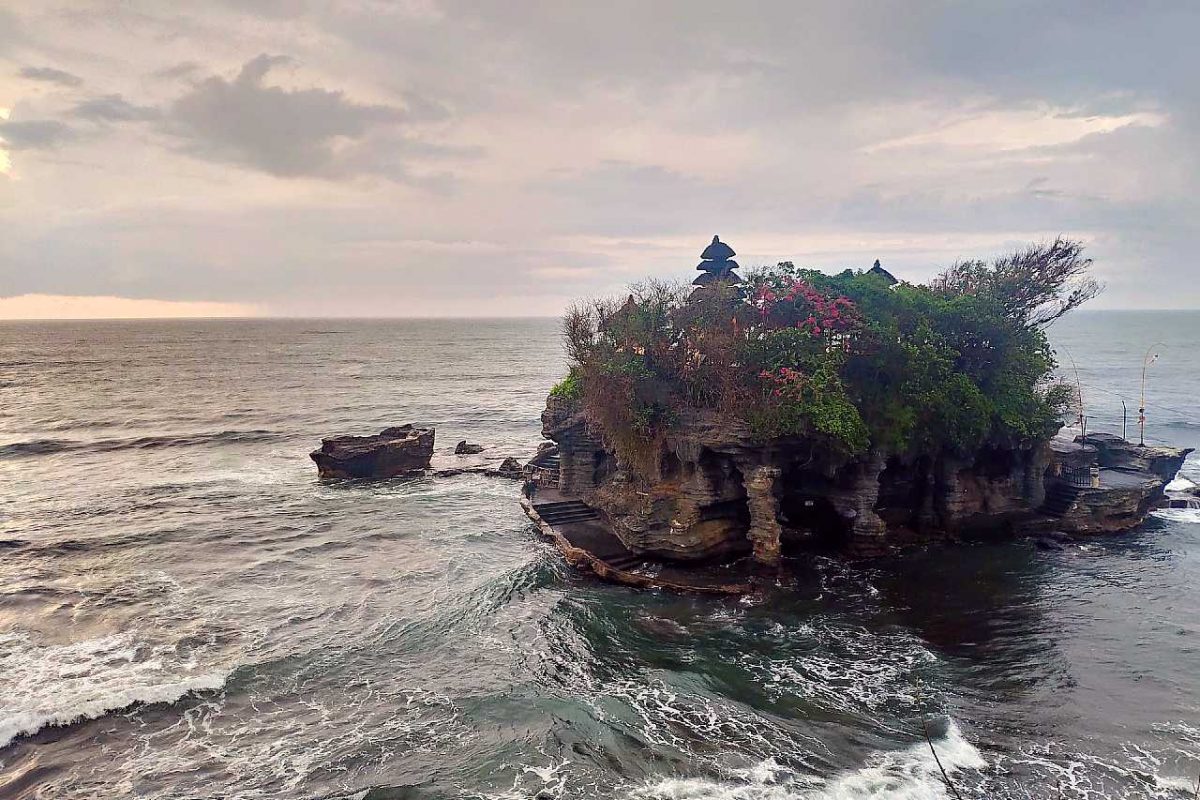Bali's no. 1 Travel Guide
Bali’s Temples (PURA)
The Island of the Gods is home to more than 10,000 temples, all of which play host to regular ceremonies honoring deities and ancestors at every stage of life.
As places of worship, Balinese communities put in significant effort to ensure that their temples are as beautiful and well-maintained as possible, reflecting the significance of these buildings in Balinese society.
Temples in Bali are the homes of deities. Normally there are at least 3 public temples within each village in Bali:
- Pura Puseh (Temple of Origin) built to honor the God of Creation (Brahma),
- Pura Desa Bale Agung built to honor the God of Life (Wisnu)
- Pura Dalem built to honor the God of the death and reincarnation (Siwa Durga).
Visitors are only permitted in certain sections of the temple if they are dressed appropriately (in a sarong) and behave respectfully. However, the central area (Inner Sanctum) of some sacred temples is reserved for religious activities only and is off-limits to all visitors.

Bali”s Most Famous Temples
Pura Besakih
Pura Tanah Lot
Pura Uluwatu
Pura Goa Gaja
Pura Goa Lawah
Tirta Empul
Pura Danu Bratan
Gunung Kawi
Visitor Etiquette & Basic Temple Rules for Bali’s Temples
Most temples in Bali warmly welcome tourists. Some temples however or some sections of temples are off-limits to anybody besides devotees.
- dress modestly, no shorts, no bikini tops,
- sarongs may be borrowed for a nominal donation to the temple or are included in the entrance fee
- read and obeye signs and directins given by temple staff
- some temples don’t have an entrance fee but locals may ask for a small donation to help fund infrastructure upgrades and cultural celebrations.
- women are not allowed to enter during menstruation
- behave appropriately, no shouting, no excessive behaviours, no alcohol etc
Different types of Balinese Temples
The Balinese word for temple is pura, and there are many distinct “pura” that serve various functions in Balinese ceremonies and coincide with different times of the year in the Balinese calendar. Temples on Bali are located along the kaja-kelod sacred axis, which runs from the mountain to the sea and symbolizes the transition between the spiritual and the earthly worlds. All of Bali’s temples are sacred sites, although some are more revered than others. The temples of Bali may be broken down into four distinct types, each based on the specific functions they serve and other distinguishing features.
1. Pura Kahyangan (Directional temples)
The most sacred sites, and most revered temples in Balinese Hinduism, where the island’s most revered deities, priests, and ancestors are honored. The temples of Kahyangan may be broken down into the following six divisions:
-
- Pura Kahyangan Sad Winayaka or Pura Sad Kahyangan (also known as the DIRECTIONAL TEMPLES of Bali)
- Pura Kahyangan Rwa Bineda
- Pura Kahyangan Catur Loka Pala
- Pura Kahyangan Padma Bhuwana
- Pura Dang Kahyangan
- Regional Pura Kahyangan Jagat

Some of the “puras” on the island were constructed on the slopes of mountains and volcanoes since it was thought that here was where the hyang (gods) made their home.
The 9 Directional Temples2. Pura Kahyangan Tiga (Traditional Village Temples)
Three temples, known as the Khayangan Tiga, may be found in most Balinese villages. The Balinese community gathers at these temples, which are often located in the middle of cities or villages for religious ceremonies.
-
- Pura Desa dedicated to Lord Brahma
- Pura Puseh dedicated to Vishnu
- Pura Dalem dedicated to Shiva
A pura dalem often has a massive tree, such a banyan or a kepuh, that is also used as a shrine due to the temple’s link with death rituals in the human life cycle. The ngaben (cremation) process often begins with the placement of this temple at the gravesite of the recently deceased.
3. Pura Tirta (Water temples)
Apart from religious purposes, these temples also manage water as part of the Subak irrigation system. The priests at these temples have responsibility over the distribution of water among rice paddies in the communities that surround the temple. A few tirta temples are known for bathing pools with sacred water for certain cleaning rituals, while others have an actual lake surrounding them.

4. Pura Segara (Sea temples)
These are puras erected near the sea to please the sea gods and goddesses. Typically used in the Melasti ritual, one of the ceremonies performed during Nyepi when sacred objects and holy artifacts are cleansed at sea to remove any negative forces.

More Fascinating Insights about Bali’s Rich Culture
Bali’s temples are indeed sacred to the Balinese and more often than not, you will witness a ceremony when visiting the temple. The most sacred and most important temple is Besakih, a towering mountain-top structure of many smaller temples and staircases. It is known as the “mother temple” and is treated with great veneration. This has been a site for pilgrimages for over 1,000 years, even surviving the nearby volcanic eruptions of Gunung Agung. Another very important temple for Balinese people is Pura Danu Bratan, a picturesque site built at the shore of lake Bratan (Beratan) in the mountain highlands near Bedugul. It is not as big as it looks like on pictures, but a very scenic place and very important to the Balinese.
Balinese temples are majestic and really beautiful such as the temple of Tanah Lot, which is perched on a rock in the ocean. This “directional temple” is particularly iconic, and is most beautiful at sunrise or sunset and less crowded at other times. Or pick Uluwatu temple of Pura Luhur in the very south; although the architecture is not as impressive like some of the other temples, it adorns a towering cliff side and is home to a colony of monkeys who are happy to accept your food or steal your sunglasses. Here, a traditional kecak dance performance can be seen at sunset. If you are especially fond of monkeys, come to Ubud’s monkey forest, a protected site which features ancient moss-covered temples and monuments, and is dedicated to the monkey god, Hanoman.
























